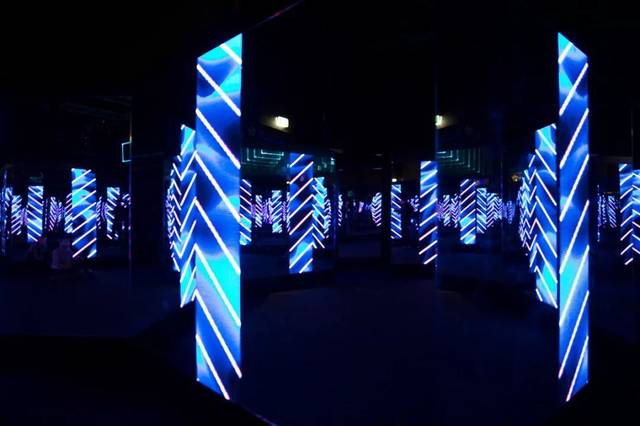Introduction: The Brain Behind the Beams
In the world of professional stage lighting, hardware may draw attention, but software is the true engine of creativity and control. Whether it’s a concert, theater show, or architectural installation, the lighting control software defines how smoothly your cues execute, how efficiently you can program scenes, and how flexible your system is under real-time pressure.
This article presents a detailed comparison of five leading lighting control software platforms:
grandMA3 by MA Lighting
Chamsys MagicQ
Avolites Titan
LightJams
Onyx by Obsidian Control Systems
Each of these solutions is designed to serve professional environments, but they differ in workflow, interface, integration, and affordability. Let’s explore the features that matter most.
1. grandMA3 by MA Lighting
Overview
grandMA3 is the industry standard for large-scale productions. Known for its reliability and deep feature set, it’s used in international touring, broadcast studios, and top-tier festivals.
Key Features
Advanced 3D visualizer (MA 3D)
Powerful effects engine with timeline control
Networked multi-user support
Real-time DMX, Art-Net, and sACN control
Highly customizable interface
Pros
Industry-leading reliability
Seamless integration with MA hardware
Handles thousands of parameters with ease
Cons
Steep learning curve
Expensive hardware requirements
Best For: International tours, major festivals, high-budget venues
2. Chamsys MagicQ
Overview
MagicQ by Chamsys is widely praised for its affordability and powerful functionality. It offers robust features without locking you into expensive hardware.
Key Features
PC- and Mac-based versions available
Built-in pixel mapping
Free offline editor and visualizer
Timecode, MIDI, and remote app support
Pros
Free software with full feature access
Compatible with 3rd-party hardware via Art-Net
Great for club and festival environments
Cons
UI may feel dated
Advanced programming tools are buried in menus
Best For: Touring LDs, festivals, budget-conscious professionals
3. Avolites Titan
Overview
Titan OS powers Avolites consoles, including the Quartz, Arena, and Sapphire Touch. It’s known for its intuitive programming and powerful effects engine.
Key Features
Synergy media integration
Key Frame Shape engine for advanced effects
Multi-touch screen programming
MIDI and SMPTE timecode support
Pros
Very intuitive UI for new programmers
High-speed cue stacking
Designed for touch workflow
Cons
Primarily tied to Avolites hardware
Slightly limited 3D visualization options
Best For: Theater productions, dance tours, house of worship
4. LightJams
Overview
LightJams is an interactive lighting control software built for real-time improvisation, making it perfect for art installations, live VJing, and music-reactive environments.
Key Features
Real-time MIDI/audio reactive control
OSC and DMX compatible
Conditional triggering based on sensor input
Supports generative visuals and live mapping
Pros
Ideal for experimental and interactive setups
Works well with Kinect, MIDI, and sensors
Real-time parameter modulation
Cons
Not traditional console-based; no timeline
Requires technical setup and familiarity with reactive control
Best For: Art installations, reactive lighting, interactive performance.

5. Onyx by Obsidian Control Systems
Overview
Onyx is a flexible, modular lighting control software that balances accessibility with power. It’s often praised for its hybrid interface and intuitive layout.
Key Features
Dylos pixel composition engine
Plug-and-play USB DMX output (with NX-DMX)
NDI streaming and Syphon support
RDM device management
Pros
Free version available with 4 DMX universes
Great visual programming tools
Clean modern interface
Cons
Limited documentation compared to others
Some features require Obsidian hardware
Best For: Mid-size tours, churches, hybrid digital/video setups
Comparison Table Summary
| Software | OS Support | Free Version | Protocols | Visualizer | Pixel Mapping | Best Use Case |
|---|---|---|---|---|---|---|
| grandMA3 | Windows/Linux | No | DMX, Art-Net, sACN | Yes | Yes | Large-scale productions |
| MagicQ | Windows/Mac | Yes | DMX, Art-Net | Yes | Yes | Tours, Festivals |
| Avolites Titan | Windows only | Yes (limited) | DMX, Art-Net | Basic | Yes | Theater, Touch Programming |
| LightJams | Windows | Yes (trial) | DMX, OSC, MIDI | No | No | Interactive Installations |
| Onyx | Windows | Yes | DMX, Art-Net, sACN | Yes | Dylos Engine | Churches, Video Integration |
Choosing the Right Platform
Considerations:
| Question | Recommendation |
|---|---|
| Are you using advanced media/video sync? | Avolites or grandMA3 |
| Need something free for small gigs? | MagicQ or Onyx |
| Creating interactive lighting? | LightJams |
| Need professional festival-grade output? | grandMA3 or MagicQ |
| Prioritize ease-of-use with touchscreens? | Avolites Titan |
Final Thoughts
Lighting control software is more than a utility—it’s a creative partner. The right software allows you to build stunning scenes, improvise live cues, and handle complex productions without missing a beat.
Whether you're just starting out or you're managing a full festival rig, the right choice lies in your specific needs. From the high-end sophistication of grandMA3 to the real-time flexibility of LightJams, each software platform brings its own strengths to the console.
READ MORE:
Why the Outdoor Waterproof IP 250 3IN1 LED Moving Head Light Is a Game-Changer for Stage Shows
Overlooked Accessories That Make a Big Difference in Stage Lighting
Lighting in Sync: Exploring Beat-Triggered Effects in Live Shows
Interview with Lighting Designers: What Matters Most in Fixture Selection?
Master/Slave Mode and Multi-Channel Fixture Programming Tips





Blue Sea Lighting is an enterprise with rich experience in the integration of industry and trade in stage lighting and stage special effects related equipment. Its products include moving head lights, par lights, wall washer lights, logo gobo projector lights, power distributor, stage effects such as electronic fireworks machines, snow machines, smoke bubble machines, and related accessories such as light clamps.
Quick Links
For more questions subscribe to our email








